
The pearl crescent is a butterfly of North America. It is found in all parts of the United States except the west coast, and throughout Mexico and parts of southern Canada, in particular Ontario. Its habitat is open areas such as pastures, road edges, vacant lots, fields, open pine woods. Its pattern is quite variable. Males usually have black antenna knobs. Its upperside is orange with black borders; postmedian and submarginal areas are crossed by fine black marks. The underside of the hindwing has a dark marginal patch containing a light-colored crescent.
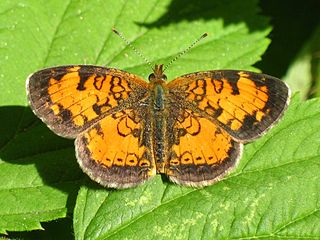
Phyciodes cocyta, the northern crescent, is a butterfly of the family Nymphalidae. It is found in the Nearctic realm.

Phyciodes batesii, the tawny crescent, is a butterfly of the family Nymphalidae that occurs in North America.
Phyciodes pallida, the pale crescent or pallid crescentspot, is a butterfly of the family Nymphalidae. It is found in the western North America.

Phyciodes mylitta, the Mylitta crescent or Mylitta crescentspot, is a butterfly of the family Nymphalidae. It is found in western North America.
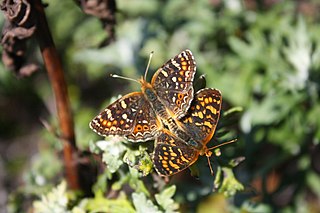
Phyciodes pulchella, the field crescent, is a butterfly of the family Nymphalidae. It is found in the Nearctic realm.
Phyciodes orseis, the Orseis crescentspot or California crescent, is a butterfly of the family Nymphalidae. It is found in the western North America, particularly northern California and Oregon. Formerly, The range was thought to extend along the Coast Range as far south as San Francisco. However, they were either mislabeled or are currently extirpated from these regions. The habitat consists of mountain valleys, meadows and stream canyons. Along with roughly 120 other species, they are check-listed as butterflies occurring on or near the Fremont-Winema National Forests. This checklist has been established based on observations throughout Lake and Klamath counties in Oregon. The list is maintained by the Forest Service in order to monitor health of native ecosystems. Monitoring population levels of butterflies such as P. orseis over time provides a metric for these efforts. These pollinators play an integral role in such systems, as they are beneficial both for the flora of the region and as food sources for regional avian species.

Anthanassa argentea, the chestnut crescent, is a species of crescents, checkerspots, anglewings, etc. in the butterfly family Nymphalidae. It is found in North America.
Poladryas arachne, the arachne checkerspot, is a species of crescents, checkerspots, anglewings, etc. in the butterfly family Nymphalidae.
Chlosyne endeis, known generally as the banded checkerspot or banded patch, is a species of crescents, checkerspots, anglewings, etc. in the butterfly family Nymphalidae. It is found in North America.
Chlosyne cyneas, the black checkerspot, is a species of crescents, checkerspots, anglewings, etc. in the butterfly family Nymphalidae.
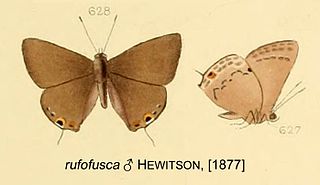
Strymon rufofusca, known generally as the red-crescent scrub-hairstreak or red-crescent hairstreak, is a species of hairstreak in the butterfly family Lycaenidae.
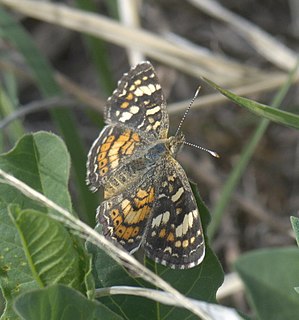
Phyciodes picta, the painted crescent, is a species of crescents, checkerspots, anglewings, etc. in the butterfly family Nymphalidae. It is found in North America.

Eunica tatila, the Florida purplewing, is a species of tropical brushfoot in the butterfly family Nymphalidae. It is found in North America.
Chlosyne melitaeoides, the red-spotted patch, is a species of crescents, checkerspots, anglewings, etc. in the butterfly family Nymphalidae.
Smyrna karwinskii, or Karwinski's beauty, is a species of crescents, checkerspots, anglewings, etc. in the butterfly family Nymphalidae.
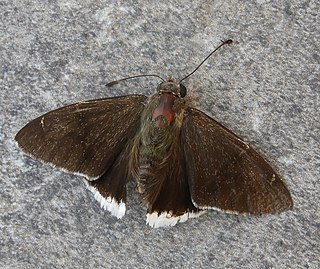
Urbanus doryssus, the white-tailed longtail, is a species of dicot skipper in the butterfly family Hesperiidae. It is found in Central America, North America, and South America.

Historis acheronta, the tailed cecropian, is a species of crescents, checkerspots, anglewings, etc. in the butterfly family Nymphalidae.

Emesis tenedia, the falcate metalmark, is a species of metalmark in the butterfly family Riodinidae. It is found in North America.
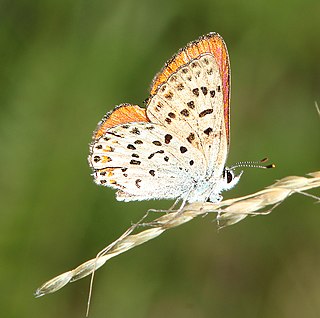
Lycaena gorgon, known generally as the gorgon copper or stream water-crowfoot, is a species of copper in the butterfly family Lycaenidae. It is found in North America.













